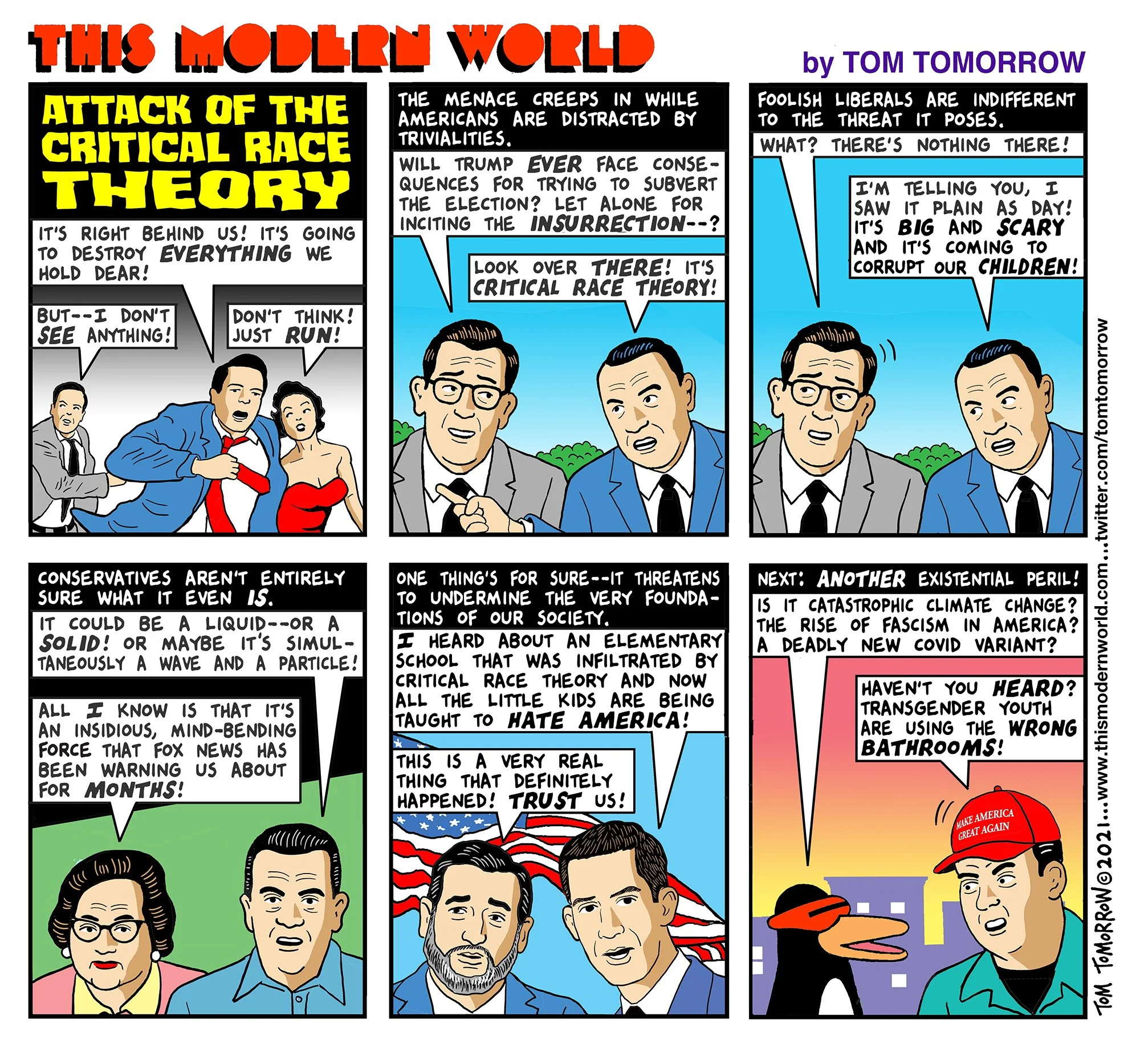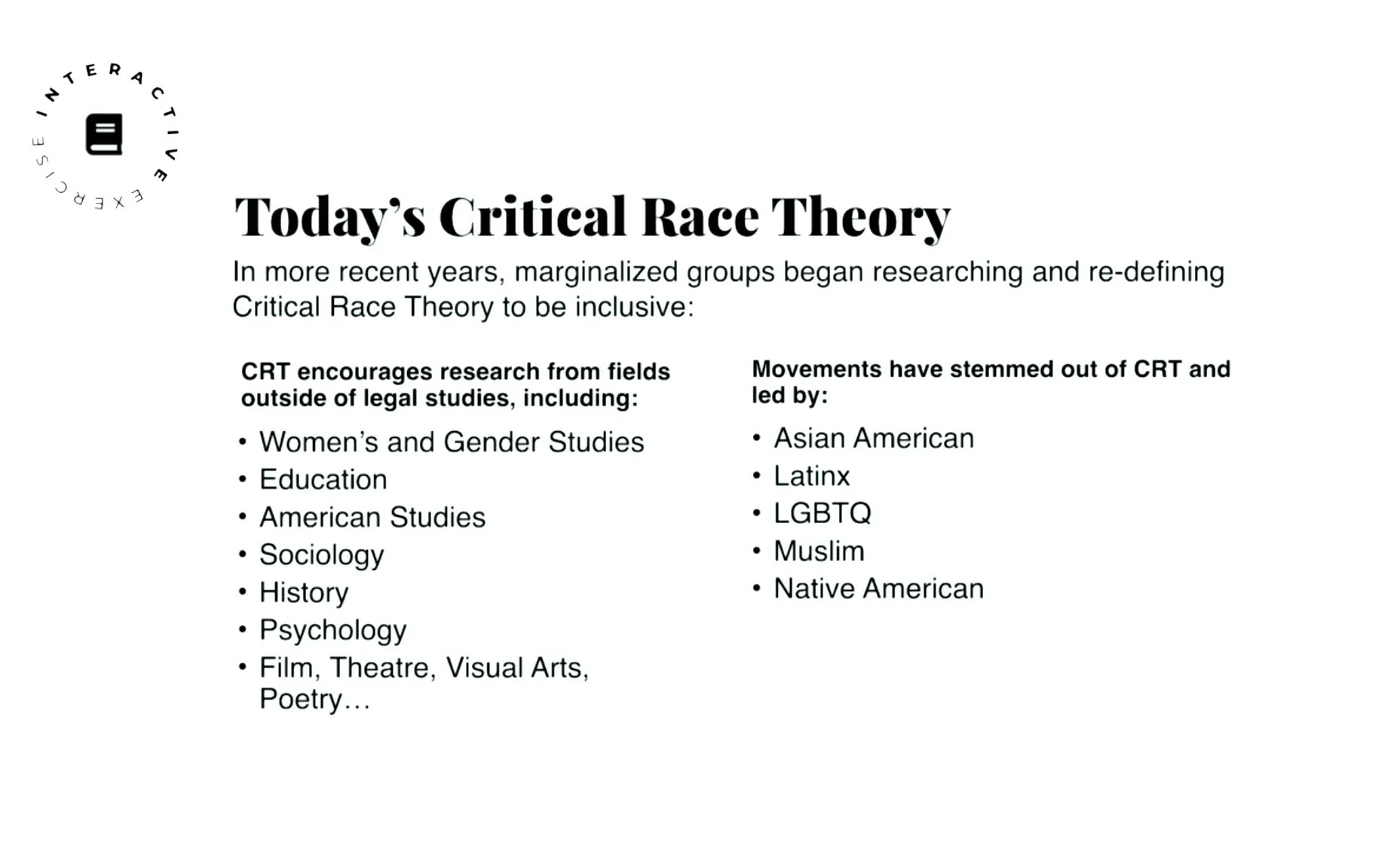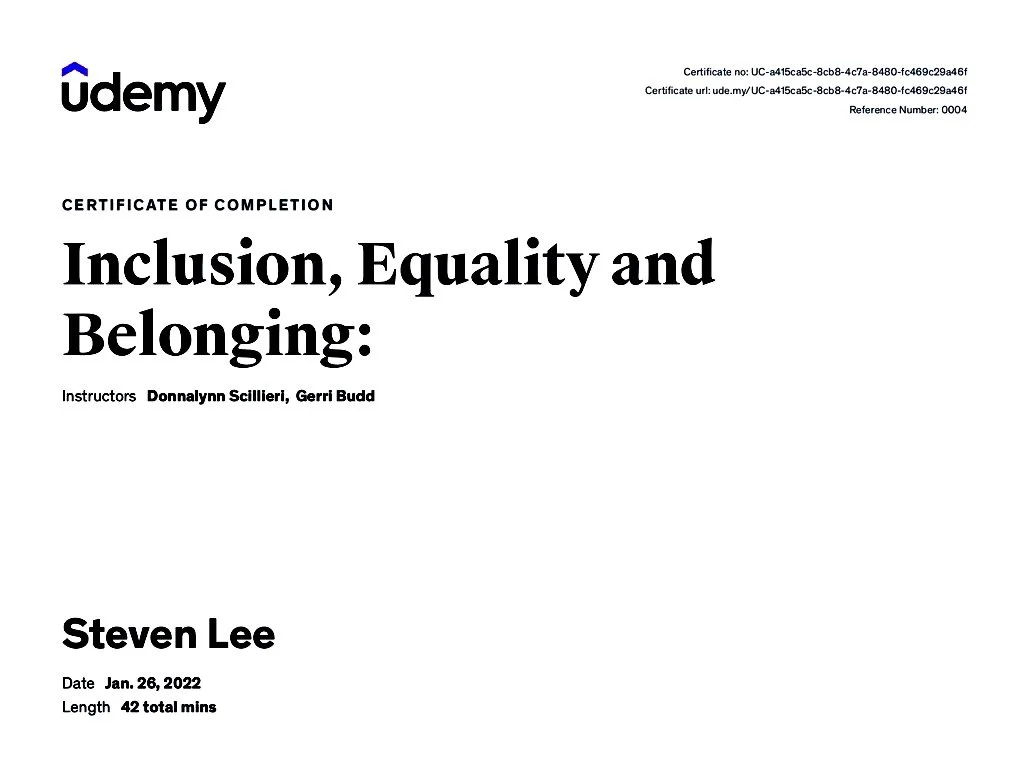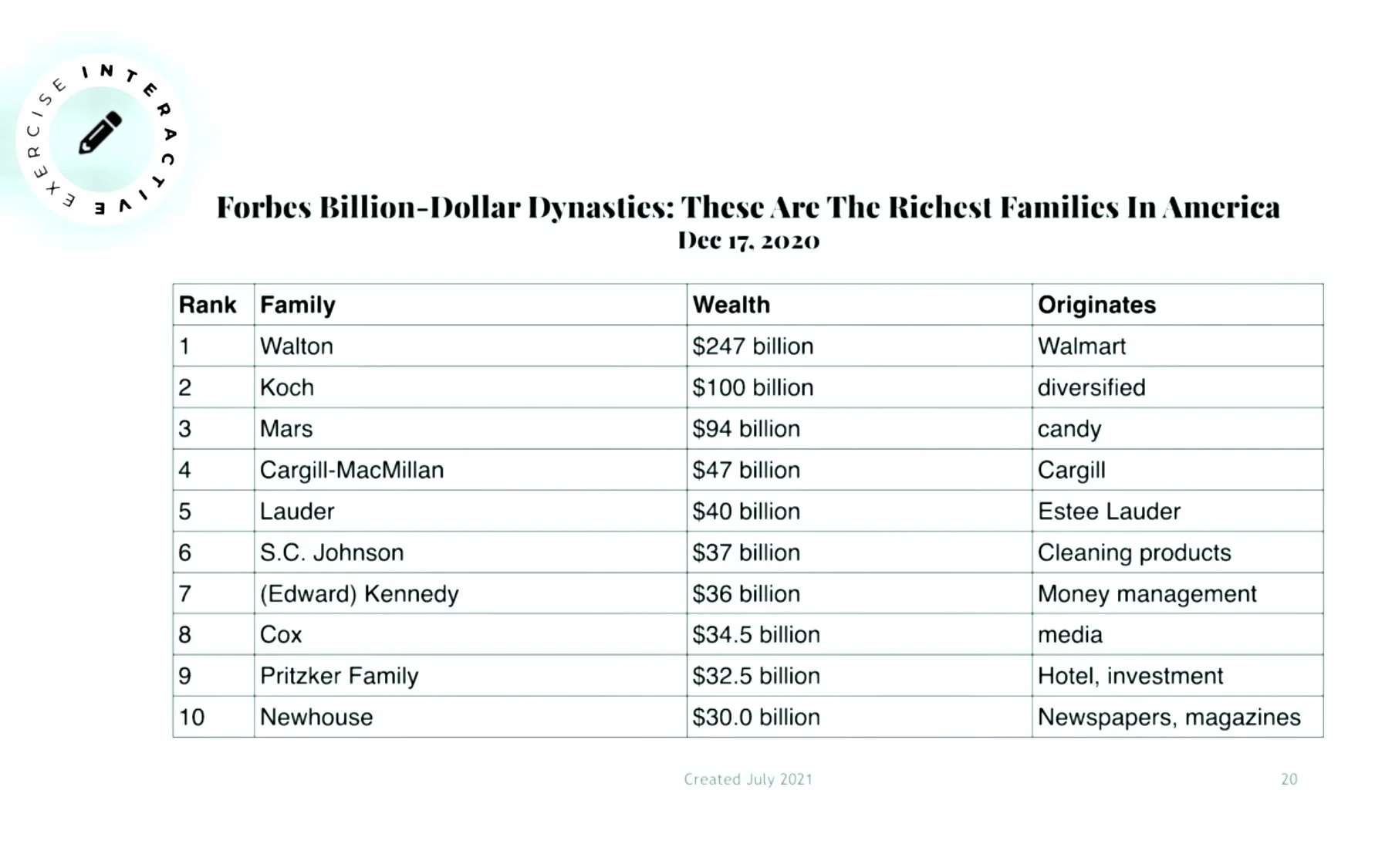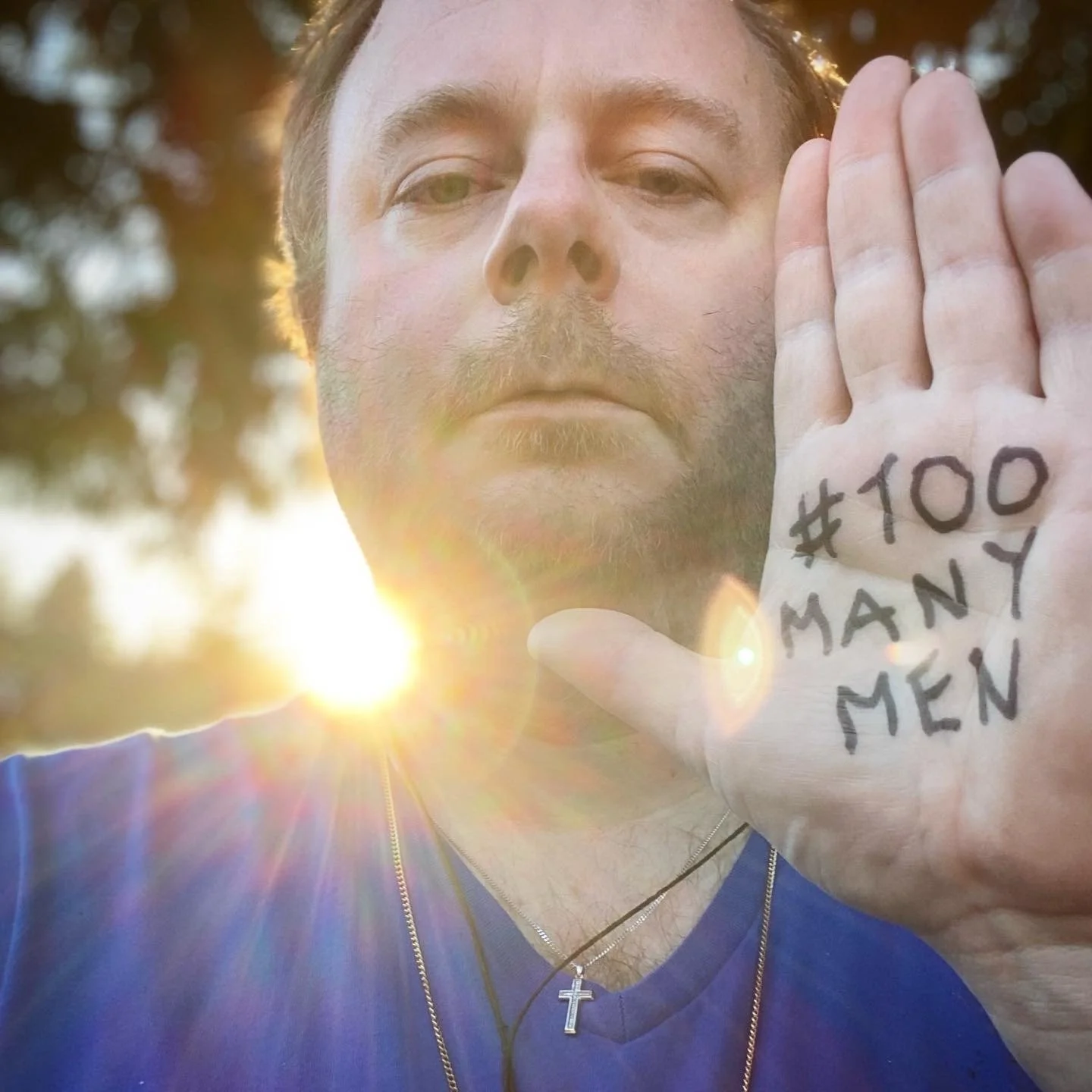Sections 26-30: Critical Race Theory (CRT)
These sections delved into the controversial topic of Critical Race Theory (often abbreviated and referred to as CRT).
Section 27: Self Inventory / Critical Race Theory Made Easy
What do you think Critical Race Theory is? From my understanding, Critical Race Theory is a lens through which issues can be examined with an eye towards understanding how different kinds of supremacies (as john a powell reminds us to challenge, is the notion of supremacy overall - be it national supremacy, racial supremacy, religious supremacy, or white supremacy) have shaped and influenced various societal structures, laws and institutions through the oppression of minorities [black, indigenous and other people of colour, (BIPOC) in particular].
Do you take what you’ve seen on social media as an accurate definition (of CRT)? To be honest, I’m somewhat cautious about what I’ve read about CRT on social media. I follow a lot of centrist and left leaning social media feeds, which tend to support CRT; and I do also encounter ideas and opinions about CRT from right leaning social media feeds, which tend to heavily criticize and even dismiss CRT as a concept.
Those on the left of this issue don’t scare me when it comes to CRT. They tend to argue that it is a healthy concept, developed by legal scholars, through which we can examine society, both in the past and the present, and from this examination, improve upon it.
But since CRT exists as a means of examining how supremacy has oppressed (and continues to oppress) many people in society, I can see how some in power might fear that any examination of societal structures from the viewpoint of critically examining supremacy, might result in them losing their power. I think this fear is why many right leaning feeds have even declared CRT as being dangerous to the very fabric of society. In fact, as I study this concept, we saw the state of Virginia this week institute an outright ban on CRT being taught or applied to curriculums in schools.
Ultimately, an article appearing in Forbes Magazine on November 2, 2021, called “Critical Race Theory Debated on Social Media” by Peter Suciu, nicely sums up why debates on social media should always be taken with a grain of salt:
The fact that this was making the rounds on social media was seen as worrisome to Dr. Robert A. Sanders, associate professor and chair of the National Security Department at the University of New Haven. Sanders told this reporter in a phone interview, "Social media is not the right place to discuss this topic if it isn't presented in the right manner."
Unlike many of the Twitter pundits who attempt to make their point about this controversial issue, Dr. Sanders actually teaches a Security, Sovereignty, and Slavery class, and summed up CRT as a "legal studies movement. It is a way to look at how race and law in our country, and from that power, has impacted our society. Critics have made it into something it is not. This isn't about teaching white kids to hate themselves."
Critical Race Theory (CRT): “A way of looking at law’s role platforming, facilitating, producing, and even insulating racial inequality.” - Professor Kimberle Crenshaw
For a deeper understanding of Crenshaw’s work, see the article by Janel George called “A Lesson on Critical Race Theory” as published on January 11, 2021 on the American Bar Association website.
THIS MODERN WORLD political cartoon called ATTACK OF THE CRITICAL RACE THEORY, by Tom Tomorrow, can be viewed at The Nation Website.
It’s important to remember that ultimately race is a social construct. RACE is NOT natural, RACE is not BIOLOGICAL.
Sections 28-29: Institutionalized Racism / Race, Law and Education
Some interesting points raised in these sections included how “Critical Theory” is not a noun, it is a verb, and it is also not a curriculum - it is an idea to be discussed.
It is also important to note that RACISM is not a bygone issue, relegated to our past.
As such, CRT is simply concerned with discussing concerns about the social construction of race, institutionalized racism, as well as the perpetual race-cast system that we see and interact with everyday, and how it has impacted our past.
Section 30: Conclusion
Our social norms change over time, ideally for the betterment of all citizens in society. CRT can help us to understand the history of racism, and how it can still exist today.
— End of Part 05 —
As with other topics in this course, I watched a few other videos I found on YouTube as related to this topic, which I’ll share here for anyone to watch if they want to…
